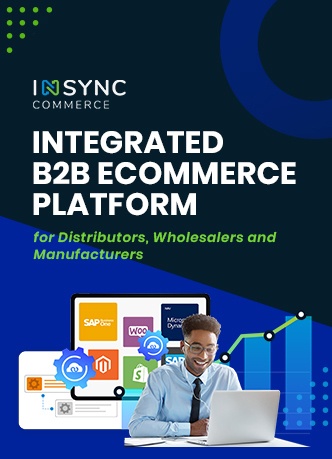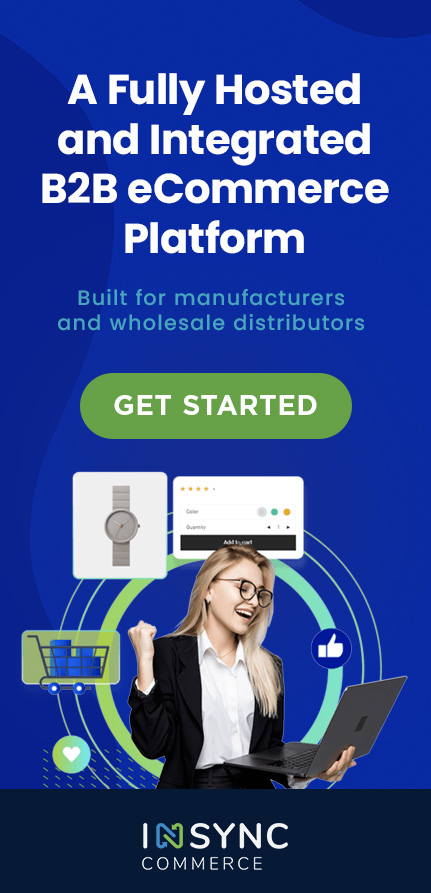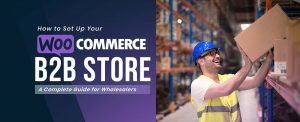
B2B eCommerce is evidently the most vastly spreading form of business around the globe. With the power of Digital Commerce in hands, merchants dealing in B2B scenarios are going to explore this sector more and churn out max output. Not just India, but the whole world is going to be the next big playground for B2B businesses.
Being one of the biggest economies in the world, India is set to enrich the B2B experience as well since huge investments are being made from the global players. The current GDP in India is $2.6 trillion and is set to reach $3 trillion by 2020. Out of this, $39 billion was contributed by the eCommerce market alone in 2017 and will reach $64 billion in 2020. Also, 14 million users are fueling the $525 billion market which will reach to become a $700+ billion industry. It is important to note that the B2B eCommerce sales volume reached $5.79 trillion in 2016, which is more than double of what was in 2006 (US).
Adopting the B2B business is going to be a global phenomenon in the coming years and it is important to know the buyers’ behavior if a merchant wants to excel in this sector. With the transformation of the customer masses, which have become more technologically advanced, it will be necessary for B2B merchants to cater to pitch their solutions exactly where they need to be.
B2B eCommerce Myths Busted
The B2B Buyer is Old – WRONG
It is thought that business owners who are dealing in the buying and selling processes of the company are old, experienced employees who have been in the line of business for a very long time. Well, it is true, but not entirely correct – while B2B business owners are exactly as explained above, they are not the prime decision-makers of the company. In a B2B company, the decision-makers are definitely experienced, but they do not follow the traditional approach of making business. In other words, millennials are the prime employees that deal with the decisions of the company, directly or indirectly.
According to a report by Merit, 73% of 20- to 35-year-olds are “involved in product or service purchase decision-making at their companies,” with a third reporting that they are the only decision-maker for their department. This shows that a huge majority of the decision-making force belongs to the younger side of the global demography. So, the solutions, their marketing and the offerings should all entice these sections of the population.
B2B Buyers are Digitally Savvy – CORRECT
The modern age B2B buyers are extremely upfront in the technological arena. These buyers are heavily advanced in using the power of the internet to help them make decisions. A majority of B2B buyers take a lot of time to review and analyze your products – they conduct researches, go through the case studies/success stories and whitepapers/eBooks, and seek out references from product ratings even before they directly come in contact with you.
B2B eCommerce – Disruptive Strategies
Invest in Discoverability
When you want to sell your products to B2B buyers, the one thing you would need to do is to make sure that you are visible to your target audience and customer base. Being discovered by your prospected clients bring you direct channels of buyers. Now, to get discovered, newer strategies need to be in place – earlier what used to be text-format information is now being pushed to the audience as videos, blog podcasts and snippets. It is highly advisable to try and use various methods to make yourself in the digital market.
A huge part of this discoverability depends on proper Search Engine Optimization (SEO). It is only SEO that is going to rank you on the first page of Google, which is your first step towards global online discoverability. You should keep in mind that you don’t get overwhelmed with SEO and you properly design it to churn out maximum and useful leads. It is important that you:
- Understand your audience – Don’t go to make the whole world your audience; understand who wants to buy your products and pitch them your content.
- Choose the right tools – Giving your analytics enough priorities might be a good thing. Even a good SEO strategy will fail if proper tools for analytics are not used.
- Talk about your products USPs – When you want to sell to B2B buyers, talk about how your products are different from others and what might be the best advantages of using yours. Clearly, communicate your ideas.
- Employ accurate keywords – To be digitally present, it is important that you create content with relevant and trending keywords. This will maximize your visibility to your target audience around the globe.
The Modern-Day Decision-Making and Buying Process
The modern-day decision-making processes are highly controlled by the influence of the internet. A prospected customer already knows a lot about you before you know them. It is important that we identify areas that would play helpful for us in order to maximize business.
It is important for you as B2B sellers to be digitally visible to your buyers in the online market. Try investing more in the company’s online presence. It would also be prudent to create more content and assets that enable the distribution of information and simplify the buying/selling process. This investment would also help you develop a stable post-purchase strategy.
Adding More Channels to your Business
Going digital can help you and your other business channels (physical stores, POS, etc.) to be visible and expand your audience to a large scale. This way, with the help of a B2B store, even your other business sources will gain an increase in valued customers due to the online discoverability of your brand.
Once you are done with the SEO of your B2B website, it is time for you to invest in practices that bring more traffic to you. Try employing as many channels and platforms as possible to push your content into. This will help you reach out to a larger and more varied customer/reader base. Also, start with publishing a variety of content at different places to churn more traction – include blogs, eBooks, case studies, webinars, podcasts, social media posts, etc. This will help you build a significant online market presence for your customers.
B2B Marketplaces
In the growing world of digital commerce, B2B marketplaces are becoming a thing. With a huge market to cater to, B2B sellers are now diving deep as to how to better reach their audience with their products.
B2B Marketplaces, unlike direct B2B platforms, provide the retail buyers the ability to place orders online through a B2B platform at their convenience. A B2B Marketplace will allow sellers to sell their products in an open online market in wholesale, in close digital proximity to their competitors. This will compel the brands to excel with their products and the B2B buyers will have more scope of research about choosing the right products.
B2B Marketplaces offer high brand discoverability and increased visibility in the market. Since all the products are stacked up, irrespective of the brands, equal importance is given to everyone. Also, fierce competition predominates the B2B marketplace – it is prudent to strategize the pricing plans for products so as not to lose customers just due to high prices.
Direct B2B Platforms
On the other hand, direct B2B platforms are dedicated B2B stores/portals that are made for selling the products of a single company. This way, your direct B2B website brings you focused leads. Direct B2B platforms provide full control over the entire business process. Also, dedicated service offers an advantage that help customers buy your products. One most important thing that a direct B2B platform would provide is the ability to establish customer relationships – returning/retained customers are as important as the new ones. With a direct B2B platform, a merchant can control all the integrities of his business, which in case of marketplaces is not possible – prices can be easily edited and set up, various discount opportunities are available, promotions become easy, showing/hiding specific items, etc.
The Future of B2B eCommerce
With persistent digitalization in the technology industry and the supply chain ecosystem, users will adopt various methods to cater to their customers. B2B merchants – traders, manufacturers, wholesalers, etc. will show a rise in the adoption of mobile apps and other platform-driven ways to stick around and gain a competitive edge in the market – firstly, this will let the B2B users bring out their products in the market in a very short period of time; secondly, smaller, unrecognized brands will be able to sell their products due to the market demand. It is a matter of time when major and critical business processes will be solely managed by tiny applications on the phone! The B2B market will thrive on the credit policies – giving credit payment options to the customers will drive more business as this will establish more trust and credibility.
With the growing transition in the B2B sector, eCommerce platforms like Magento, Shopify, WooCommerce, BigCommerce, etc. will also gain a rise in demand. However, not all platforms will provide integrated B2B solutions. Users will have to either upgrade or employ dedicated B2B solutions to move to B2B with ease.
In the fast-moving world of digital commerce, it is important merchants move to B2B eCommerce – the Next Big Thing!
Get started with your B2B eCommerce store and gain a competitive edge in the market!










